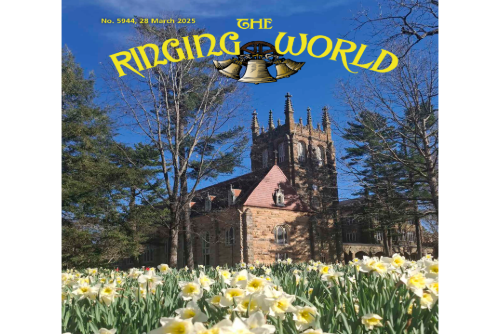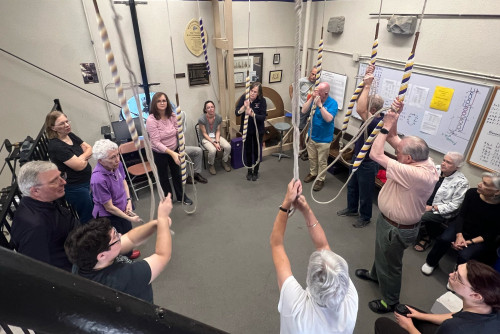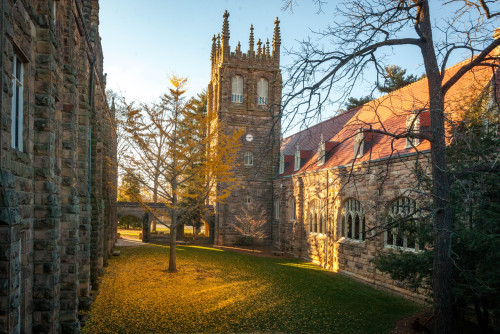A Ring of Eight English Change-Ringing Bells
LOCATION
Breslin Tower at Convocation Hall, University Avenue, Sewanee, Tennessee
Donor
Mrs. Donne Bentley Wright of Chattanooga, Tennessee
Foundry
Cast on July 4, 2003, at the Whitechapel Bell Foundry, London, England
Bell Names and Inscriptions
| Tenor | 1255 lbs | George Eli Bentley |
| #7 | 895 lbs | Mildred Virginia Haefner Bentley |
| #6 | 796 lbs | Andrew Wright Mahler |
| #5 | 603 lbs | Laura Elizabeth Adcox |
| #4 | 507 lbs | John Lewis Adcox |
| #3 | 450 lbs | Samuel Christopher Mahler |
| #2 | 417 lbs | James Arthur King IV |
| Treble | 412 lbs | Spencer Wright King |
Tower Captains
Paul Engsberg: 2004 - 2011
Gail Watson: 2011 - 2015
John Solomon, C’70: 2015 - Present
Change ringing Instructors
The Rev. Dr. Raymond Gotko, T’90: 2013-present
Rachel Rogers, C’18, Tutor: 2017- 2018
Jay Tavarez-Brown, C’21, Tutor: 2018-2020
Emma Spicer, C’23, Tutor: 2020 – 2023
Meridith Frazee, C’24, Tutor: 2023 - 2024
The Ringers
 Members of the Sewanee Guild of Change Ringers are composed of University of the South students and members of the Sewanee community.
Members of the Sewanee Guild of Change Ringers are composed of University of the South students and members of the Sewanee community.
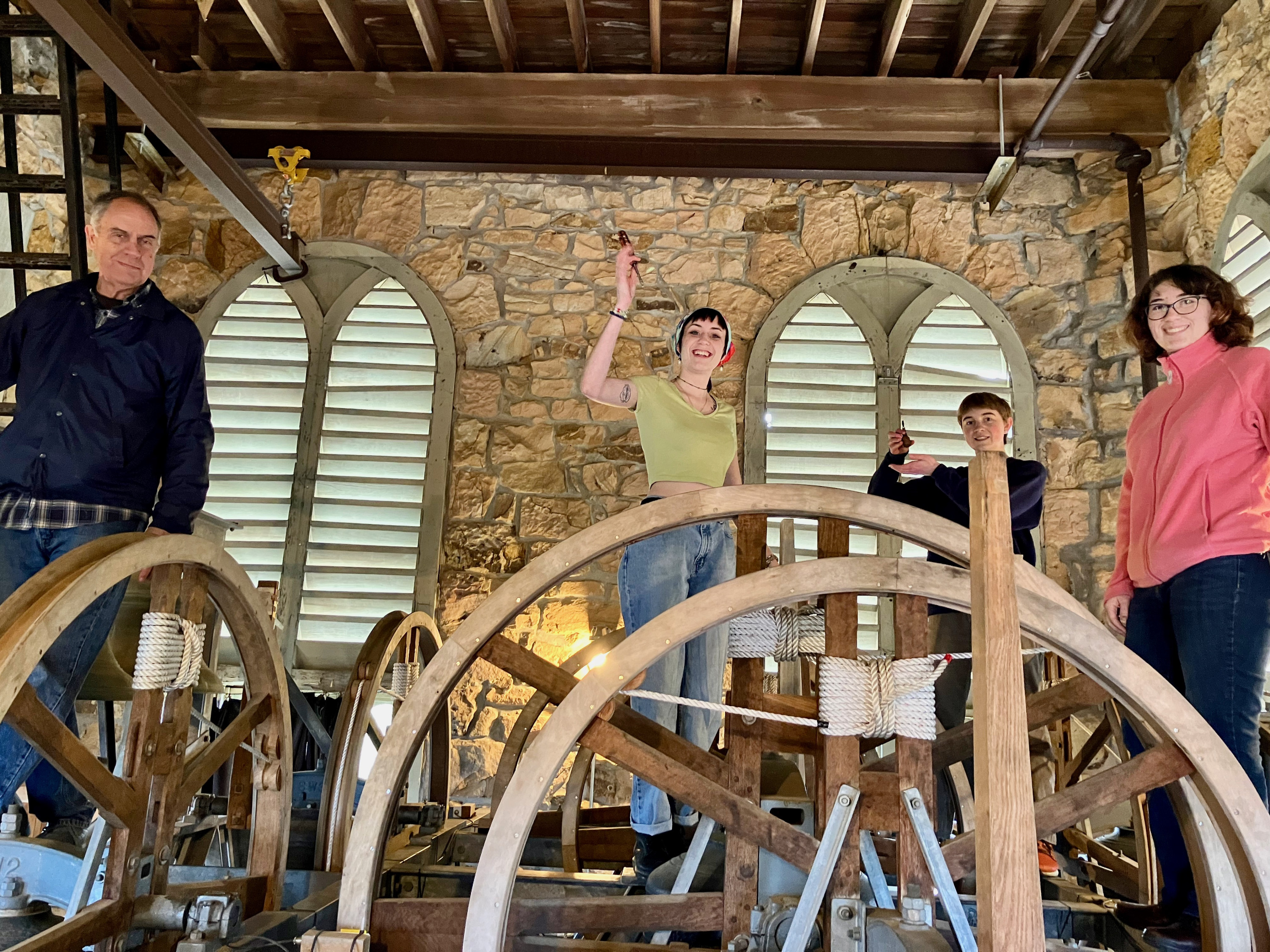 |
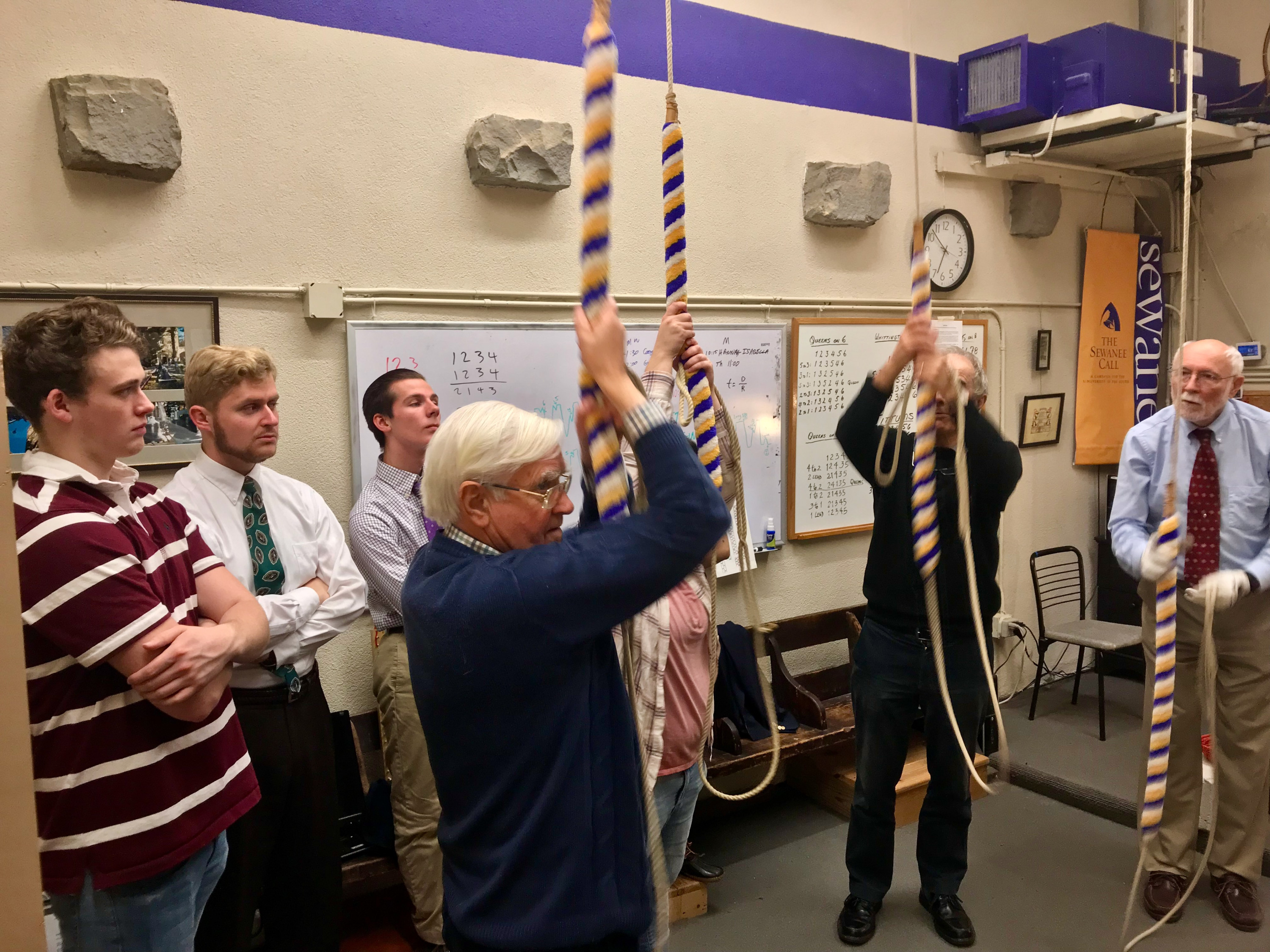 |
A Brief History of the Bentley Bells
The Bentley Bells were born on the Fourth of July 2003, at the Whitechapel Foundry in London, England. They are a set of eight change ringing bells presented to the University of the South by Donne and Spencer Wright in memory of Donne’s parents, Mildred and George Bentley, and in honor of Paul Engsberg, former Associate Dean of Admissions and University Registrar. They are tuned to the musical scale of G major. The bells were dedicated in April 2004 and an inaugural peal was run the same year on All Saints Day by the Society of Royal Cumberland Youths from London. Each Sunday, the bells are rung before the primary Eucharist at All Saints Chapel, and they also sound for major events at the University.
What is Change Ringing?
Change ringing is a fascinating activity originating roughly 350 years ago in England. It has something for everyone—dashes of music, physical exercise, meditative concentration, a sociable team sport, and a little math (optional). Groups of people cooperate to change the order in which they ring their bells according to a precise pattern.
How does it work?
The bells are in a frame in a room above the ringers' heads. They are mounted on wheels and swing full circle, from mouth up to mouth up. By carefully manipulating the rope on each swing, a bell can be made to pause briefly or slightly vary its speed. A skilled ringer can time the strike on each swing to place their bell precisely in its place and to vary the place of that bell in the pattern.
What Does the Music Look Like?
Instead of traditional melodies, we ring patterns called "methods." It looks complicated, but there is a unique, elegant structure to each of them that make them fun and interesting to learn. This method, called "Plain Hunt Minimus," is often learned by intermediate ringers. We ring these methods from memory, which is not as hard as it sounds.
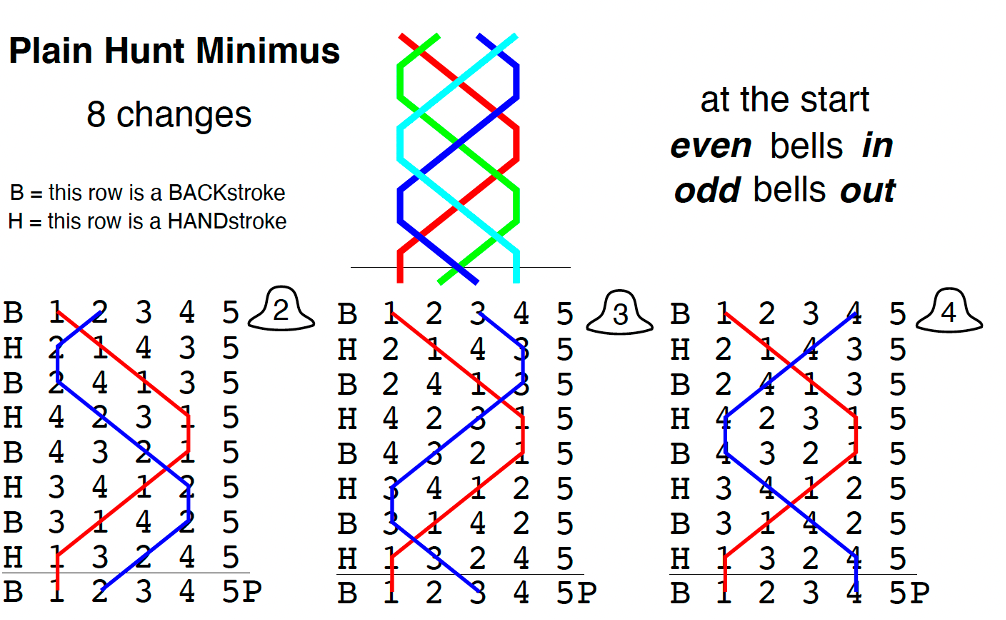
When Do We Ring?
The band rings every Sunday during the Academic Year before the 11 a.m. service at All Saints' Chapel and practices on Tuesdays and Thursdays from 6 p.m. to 7 p.m. Change ringing is also taught to students who receive the required physical education credits for graduation. Community members may learn to ring by appointment with the current instructor.
Who Do We Contact?
Contact John Solomon or Ray Gotko at sewanee-ringers@sewanee.edu for more information on the Sewanee Bells or to become involved with the Sewanee Guild of Change Ringers.
